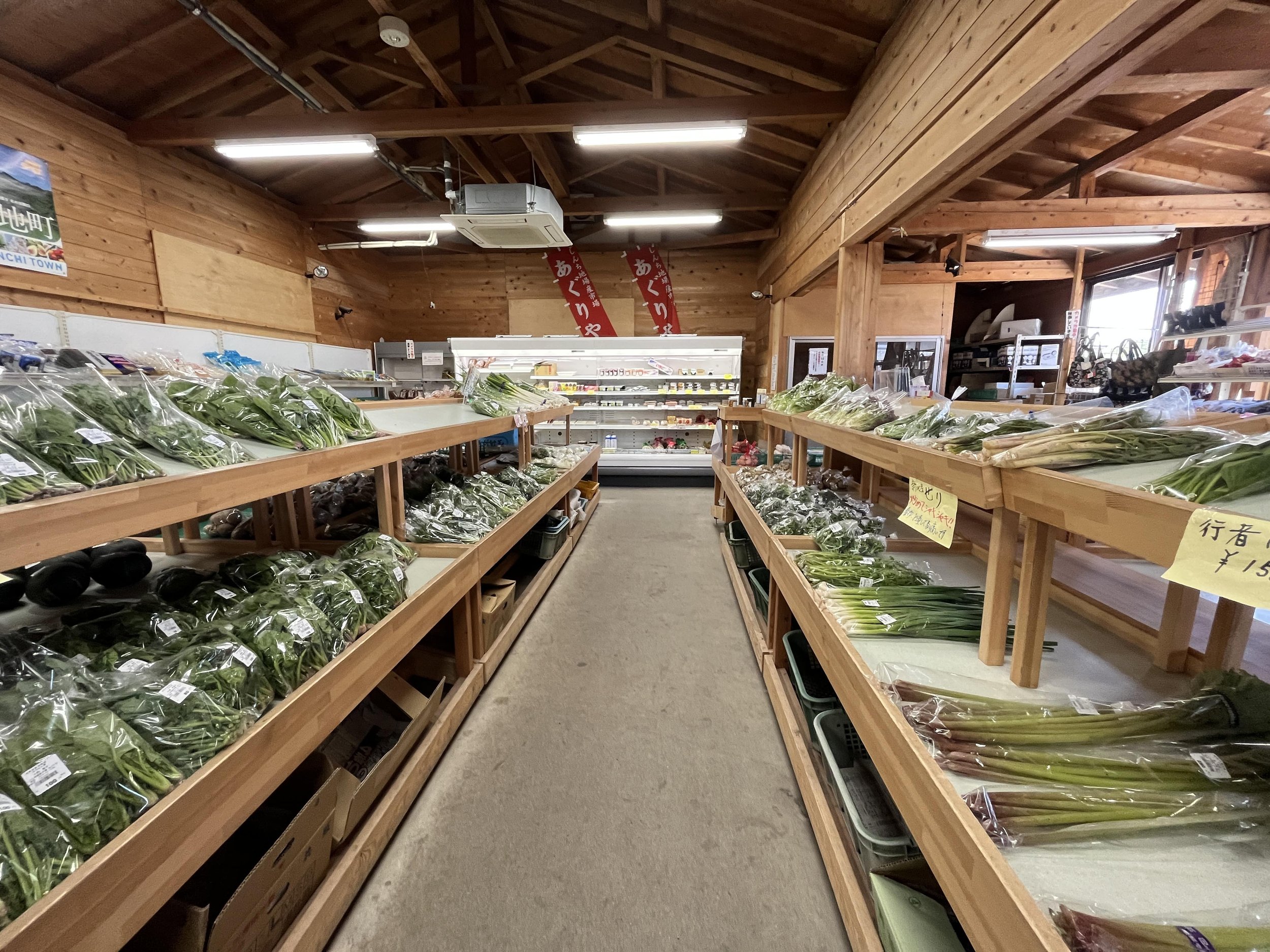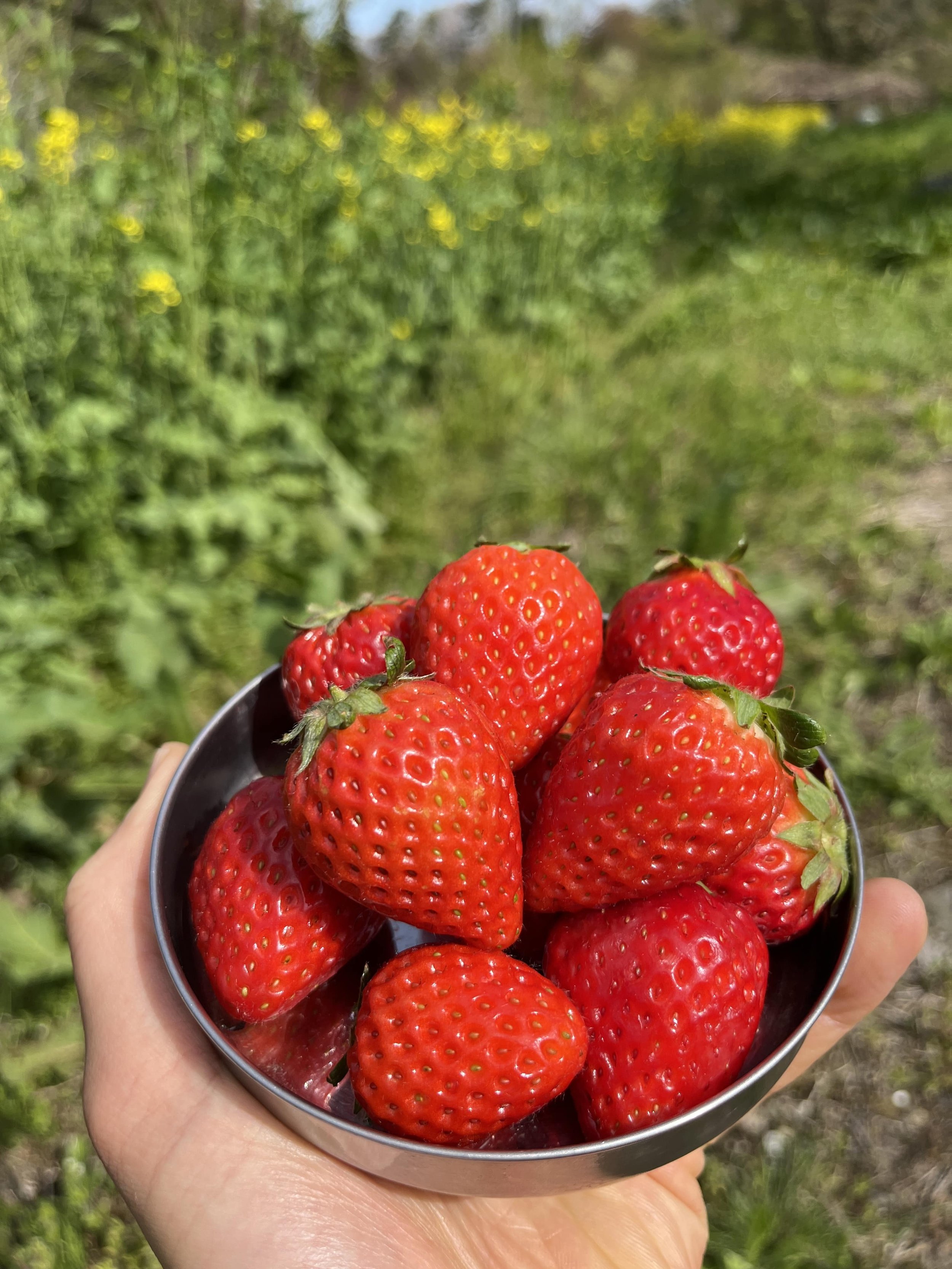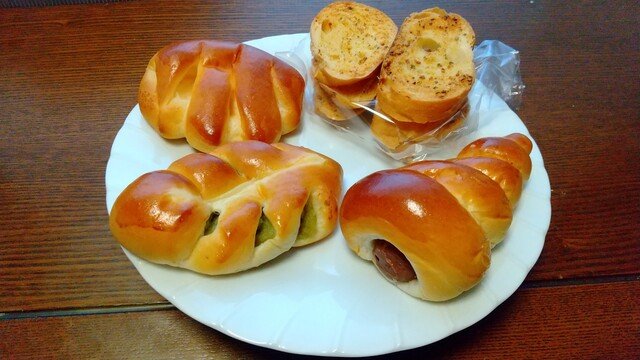Recommended Hike:
Mt. Karou (Fukushima)
Views, onsen and local produce: Mt. Karou offers a pleasant day hike in northern Fukushima.
Mount Karou(鹿狼山)
Mount Karou is a relatively easy and popular hike near the town of Shinchi, Fukushima. On a clear day, visitors can enjoy views of the Pacific Ocean, Mt. Kinka, the Zao mountain range, and the rolling hills of the Abukuma highlands.
Hiking map for Mt. Karou, approximately 19 kilometre loop starting from Shinchi train station
Overview
At the northernmost tip of Fukushima Prefecture, Mt. Karou (known as Karousan in Japanese) offers a pleasant day hike for those looking for a mini adventure along the southern part of the Michinoku Coastal Trail. It is accessible year-round for hiking, and has 2 onsen (hot springs) en route too.
For those seeking an early morning adventure, you can famously catch spectacular views at sunrise. Mt. Karou holds the distinguished title of hosting ‘Japan's earliest mountain opening’, and every New Year's Day, some 3,000 hikers begin their ascent at 5:30 AM to usher in the new year.
Getting There
Take a train to JR Shinchi Station(新地駅). I recommend using a service like Jorudan for accurate train times in English. Alternatively, you can walk from the Michinoku Coastal Trail’s southern terminus; in this case, Mt. Karou would likely be the second day of your hike.
From the station, follow the maps and the Michinoku Coastal Trail markers to the foot of the mountain. You can walk this first section, which is largely along roads, in approximately 1.5 hours. On the way, you will pass Kobimine Shrine(子眉嶺神社), a shrine regarded as a guardian of horses from centuries ago, and walk along mainly quiet country roads.
Alternatively, you can take a taxi from Shinchi station to the Mt. Karo Trailhead (鹿狼山登山口/Karou-san Tozanguchi), a journey that should take around 10 minutes by car.
Michinoku Coastal Trail markers dotted around Shinchi town, Fukushima
Farmer’s Market Aguriya
If you are walking from south to north (or clockwise from the station), you will likely come across Farmer’s Market Aguriya (あぐりや)as you head to the foot of the mountain. Stop by to pick up some snacks and local produce. Depending on the season, you may be lucky enough to pick up a bag of fresh tomatoes, strawberries or apples to enjoy during your walk.
Aguriya あぐりや, a local Farmer’s Market
Enjoying locally grown, sweet strawberries on the trail
Mt. Karou Trailhead
At the trailhead, there is a public toilet, a small shelter with posters and other trail-related information, and a car park with around 20 spaces.
Karou san (鹿狼山) means “deer and wolf mountain”, a name stemming from the story of a deity called Tenaga Myojin who is believed to inhabit the mountain with these two animals. As you enter the hiking trail, statues of a deer and a wolf are perched behind a stone Torii gate.
Note: in case you’re wondering if you need to keep an eye out for real wolves on the trail, the Japanese Wolf sadly became extinct in the 20th century due to hunting and habitat loss.
There is an onsen, Karou No Yu (鹿狼の湯)near the trailhead too, where you can bathe while overlooking the Pacific Ocean, indulge in some soba noodles, and even stay the night (website in Japanese only). This onsen has over 100 years of history and is popular among both locals and visitors.
Mt. Karou (鹿狼山) literally means “deer and wolf mountain”
Take a break at the small shelter at the base of the mountain (no shops)
Summit
The hike to the top is not particularly strenuous; it should take 40 minutes to an hour. The path follows the "Jukai” (Forest) hiking route to the summit. If you’re lucky, you may be able to spot the elusive Giant Japanese Flying Squirrel(ムササビ) or a Japanese serow (カモシカ)in the surrounding forest.
From the summit (elevation 430 metres), Mt. Karou provides 360-degree views that stretch from the Pacific Ocean to the mountain ranges of Zao and Azuma, and even to Kinkasan and the Oshika Peninsula in Miyagi Prefecture in the east. There is also a small shrine, Karou-san Shrine (鹿狼山神社)where you can pay your respects.
View from the top of Mt. Karou
Karou-san Shrine (鹿狼山神社)at the summit
Once you’ve climbed to the top, you can continue northwards. Follow the “Zao Chobo” (Mt. Zao View) Hiking Course, a tree-lined path that follows the ridge.
Mayumi-Shimizu & Ukon-Shimizu Springs
As you descend from the other side of the ridge, the path will eventually lead to Mayumi-Shimizu Spring(真弓清水). Here, you can fill up with delicious spring water.
A little further on, you will come across a small pond. After walking through a cherry tree-lined walkway, you will find a spring that (again) provides extremely fresh and tasty spring water. This is the famous Ukon-Shimizu Spring(右近清水), named after a historic figure - Date Ukon - in honour of his contributions to the local area.
After the Springs, you can either head back to Shinchi station, or northwards along the Michinoku Trail towards Sendai. If you’re looking for some Japanese-style baked goodies, stop by Bakery Bonheur Yasuhiro 66 (ボヌールやすひろ66)- a short walk from Ukon-Shimizu Spring.
Accommodation & Onsen
Along the section, you can stay at either the Karou No Yu onsen at the foot of Mt. Karou (see above) or opt for a business hotel outside Shinchi station, Hotel Grado Shinchi. As always, make sure to book ahead!
If you didn’t have a chance to take a dip at Karou No Yu onsen, don't worry. There is a small onsen right outside Shinchi station; Tsurushi No Yu (つるしの湯), where you can have a well-earned bath. The adjacent restaurant serves up some simple, but tasty teishoku-style meals too.
Tsurushi No Yu onsen near Shinchi station also houses a small restaurant
Bakery Bonheur Yasuhiro 66, near Ukon-Shimizu Spring (Photo: Tabelog)
Indulge in some self-care after a day’s walk at the Tsurushi No Yu onsen hot spring, near JR Shinchi station.
So, there you have it! If you’re looking for a fun day hike in the Fukushima section of the Michinoku Coastal Trail, Mt. Karou is a good option. It’s accessible, offers memorable views, and can be hiked year-round too. Happy trails!


















